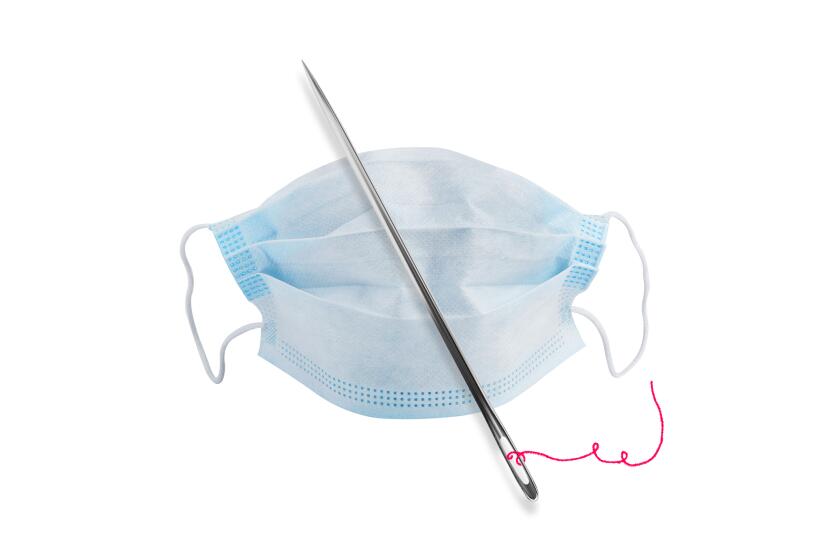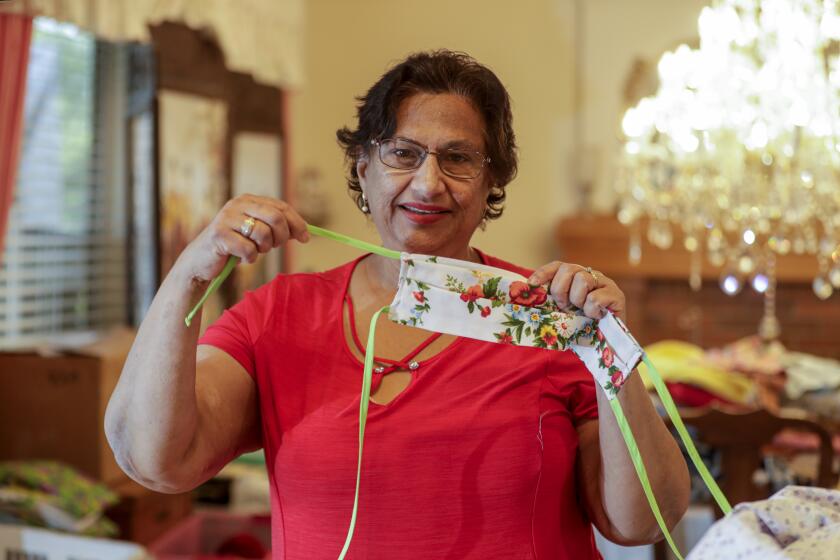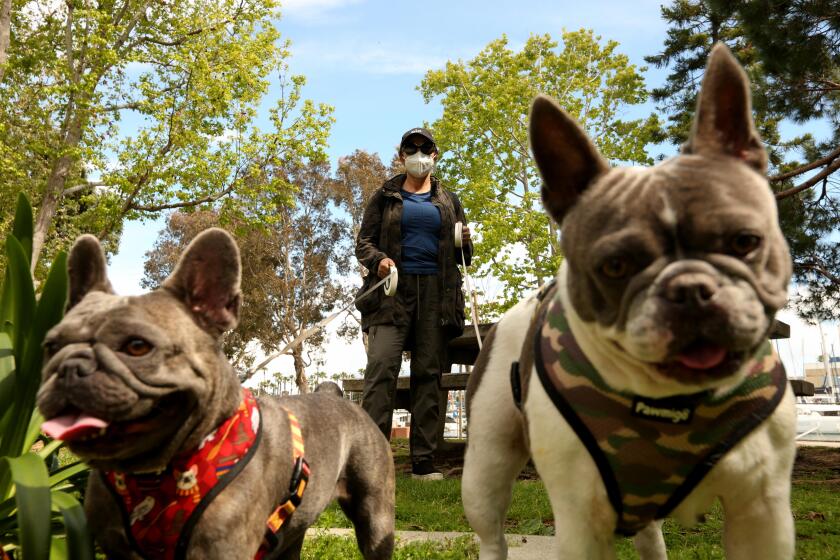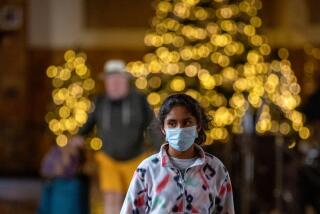The do’s and don’ts of wearing a face mask correctly (and comfortably)
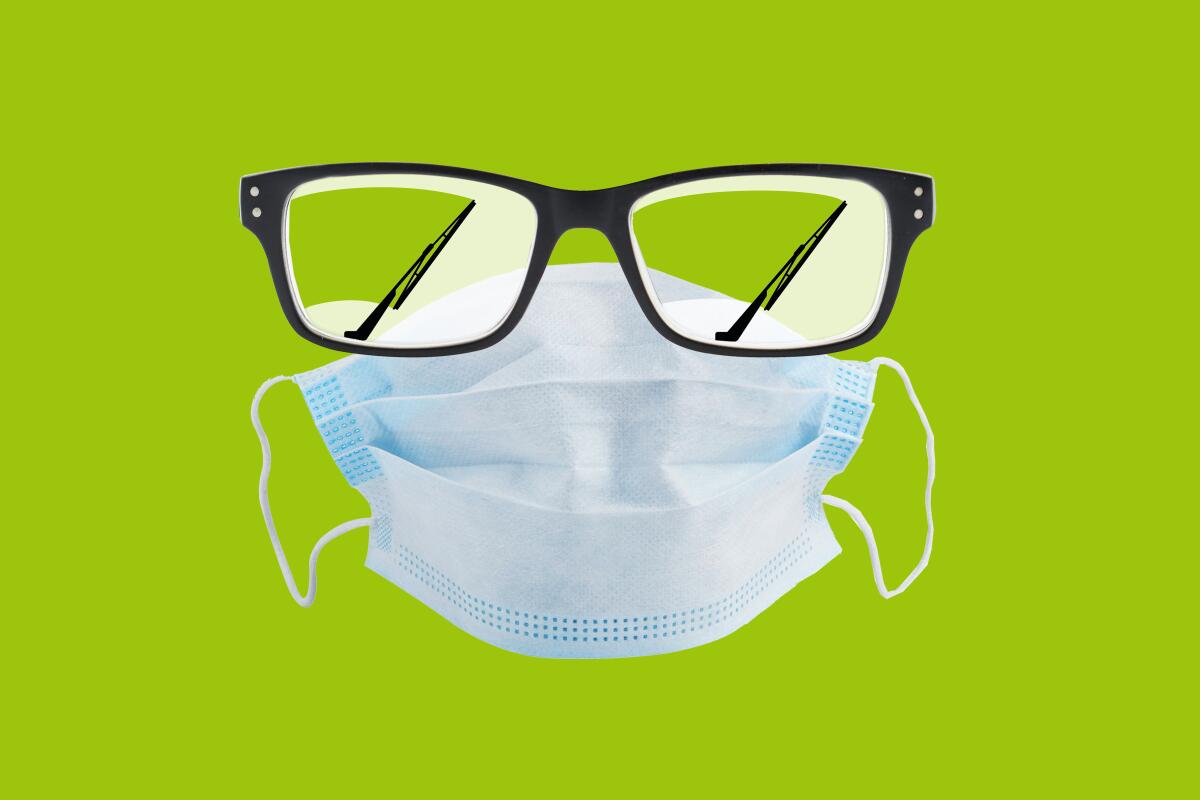
It was a goodwill gesture meant to inspire those sheltering in place: a video of former Dodgers manager Tommy Lasorda, decked out in Dodger blue, face mask and gloves, urging Los Angeles residents to stay home to fight the spread of COVID-19.
“Stay home! Wear your mask,” 92-year-old Lasorda said in the video posted on the Dodgers’ radio home, AM 570 LA Sports. “Do everything to help yourself and your country and your friends.”
So why were the station’s Twitter followers so concerned?
Lasorda wasn’t wearing his mask properly.
Among the Twitter comments: “Somebody near him please help him with his mask... we want him to live long enough to see at least one more Dodgers World Series Championship!”
DIY coronavirus mask instructions from crafters and doctors.
Lasorda is not alone. Ever since the Centers for Disease Control and Prevention recommended the use of cloth masks to help slow the spread of COVID-19, the mandatory accessory (in Los Angeles County) has taken some getting used to. While World Health Organization guidelines state that masks should cover your mouth and nose, there is no denying it can be a hot, uncomfortable and foggy experience.
In an interview with The Times, Paula Cannon, a professor of molecular microbiology and immunology at the Keck School of Medicine at USC, recommended T-shirt masks for comfort and function.
“I think the important components of an effective face mask are, number one, can you breathe? Is it comfortable for you to wear?,” Cannon said. “Because if you can’t breathe easily, or it gets wet and it’s uncomfortable, you’re going to be fiddling with it, and you’re going to be doing the very thing we want the mask to stop you from doing, which is touching your face. So have something that’s comfortable.”
“You don’t want to be wearing something that’s like a plague doctor on the front of your face, because that’s kind of awkward. But have something that’s comfortable, doesn’t inhibit you breathing and stays on. But it can be something as simple as a couple of bandanas wrapped around and tied jauntily at the back. That would actually work very well.”
Face coverings and masks may help to stem the spread of the coronavirus. But how to keep them clean?
According to the CDC, your face mask should do the following when put on correctly:
- Fit snugly but comfortably against the side of the face
- Be secured with ties or ear loops
- Include multiple layers of fabric
- Allow for breathing without restriction
- Be able to be laundered and machine dried without damage or change to shape
- Cover mouth and nose with no gaps between your face and the mask.
Also, individuals should be careful not to touch their eyes, nose or mouth when removing their face covering and should wash their hands immediately after removing it.
Wear a mask when inside an essential business, or when riding a bus or train. The cities of Long Beach, Pasadena and L.A. have issued similar orders.
The World Heath Organization’s tips:
- Before putting on a mask, clean hands with alcohol-based hand rub or soap and water.
- Cover mouth and nose with mask and make sure there are no gaps between your face and the mask.
- Avoid touching the mask while using it; if you need to, clean your hands with alcohol-based hand rub or soap and water.
- Replace the mask with a new one as soon as it is damp and do not re-use single-use masks.
- To remove the mask: remove it from behind (do not touch the front of the mask); discard immediately in a closed bin; clean hands with alcohol-based hand rub or soap and water.
If you are having issues with foggy glasses, soap and water may do the trick. According to research published in the Annals of the Royal College of Surgeons of England in 2011, doctors who washed their glasses with soapy water, without rinsing, and let them air dry prior to wearing a face mask experienced reduced fogging.
Washing glasses with soapy water “leaves behind a thin surfactant film that reduces this surface tension and causes the water molecules to spread out evenly into a transparent layer,” the study said. “This ‘surfactant effect’ is widely utilized to prevent misting of surfaces in many everyday situations.”
Folding a tissue and placing it on the bridge of your nose and underneath your glasses also helps reduce condensation as the tissue will absorb the moisture from your breath.
Los Angeles residents are required to wear masks when shopping to help slow the coronavirus spread. Here’s where to buy them locally.
If you are really struggling with wearing a mask during exercise or walking the dog, remember the Los Angeles County Safer at Home order does not require masks while on a solitary run or walk. Additionally, people who live together are not required to wear masks while on a walk or a jog, according to Los Angeles Mayor Eric Garcetti.
As sheltering in place continues and grows tedious, it’s worth noting that the CDC guidelines are designed to protect not just you but the people around you, especially if you are a carrier but show no signs of the virus. Furthermore, wearing a mask is not a substitute for hand washing, physical distancing or remaining at home.
“With the weather warming and time moving forward, people may likely become complacent,” said Suellen Hopfer, a professor of population health and disease prevention at UC Irvine. “It’s equally important to keep in mind the parallel recommended behaviors to minimize spread of COVID-19.” These include:
- Keep hands below the shoulders (to minimize hands touching face).
- Continue washing hands with soap and water.
- Continue being vigilant and minimize venturing out.
- Avoid interacting closely with other people to the extent possible to minimize spread.
- Clean your phone and household areas of high contact (doorknobs, fridge handles, faucets, etc.).
- Wash masks if they have been used several times and are dirty (if they can be washed; otherwise throw them out and get new ones).
Don’t touch the eyes.
Finally, immunity after having been sick is not certain nor clear at this stage.
Health experts explain what to look for in a mask and other ways to use face coverings as a precaution against the coronavirus.
More to Read
Sign up for our L.A. Times Plants newsletter
At the start of each month, get a roundup of upcoming plant-related activities and events in Southern California, along with links to tips and articles you may have missed.
You may occasionally receive promotional content from the Los Angeles Times.
